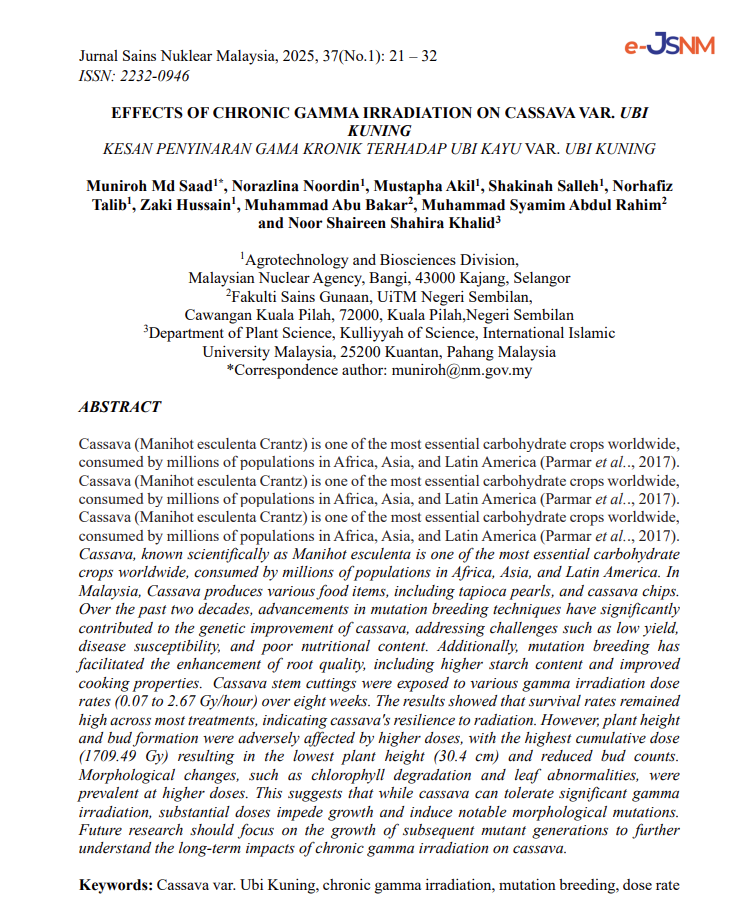EFFECTS OF CHRONIC GAMMA IRRADIATION ON CASSAVA VAR. UBI KUNING
KESAN PENYINARAN GAMA KRONIK TERHADAP UBI KAYU VAR. UBI KUNING
Keywords:
Cassava var. Ubi Kuning, chronic gamma irradiation, mutation breeding, dose rateAbstract
Cassava (Manihot esculenta Crantz) is one of the most essential carbohydrate crops worldwide, consumed by millions of populations in Africa, Asia, and Latin America (Parmar et al.., 2017). Cassava (Manihot esculenta Crantz) is one of the most essential carbohydrate crops worldwide, consumed by millions of populations in Africa, Asia, and Latin America (Parmar et al.., 2017). Cassava (Manihot esculenta Crantz) is one of the most essential carbohydrate crops worldwide, consumed by millions of populations in Africa, Asia, and Latin America (Parmar et al.., 2017). Cassava, known scientifically as Manihot esculenta is one of the most essential carbohydrate crops worldwide, consumed by millions of populations in Africa, Asia, and Latin America. In Malaysia, Cassava produces various food items, including tapioca pearls, and cassava chips. Over the past two decades, advancements in mutation breeding techniques have significantly contributed to the genetic improvement of cassava, addressing challenges such as low yield, disease susceptibility, and poor nutritional content. Additionally, mutation breeding has facilitated the enhancement of root quality, including higher starch content and improved cooking properties. Cassava stem cuttings were exposed to various gamma irradiation dose rates (0.07 to 2.67 Gy/hour) over eight weeks. The results showed that survival rates remained high across most treatments, indicating cassava's resilience to radiation. However, plant height and bud formation were adversely affected by higher doses, with the highest cumulative dose (1709.49 Gy) resulting in the lowest plant height (30.4 cm) and reduced bud counts. Morphological changes, such as chlorophyll degradation and leaf abnormalities, were prevalent at higher doses. This suggests that while cassava can tolerate significant gamma irradiation, substantial doses impede growth and induce notable morphological mutations. Future research should focus on the growth of subsequent mutant generations to further understand the long-term impacts of chronic gamma irradiation on cassava.


